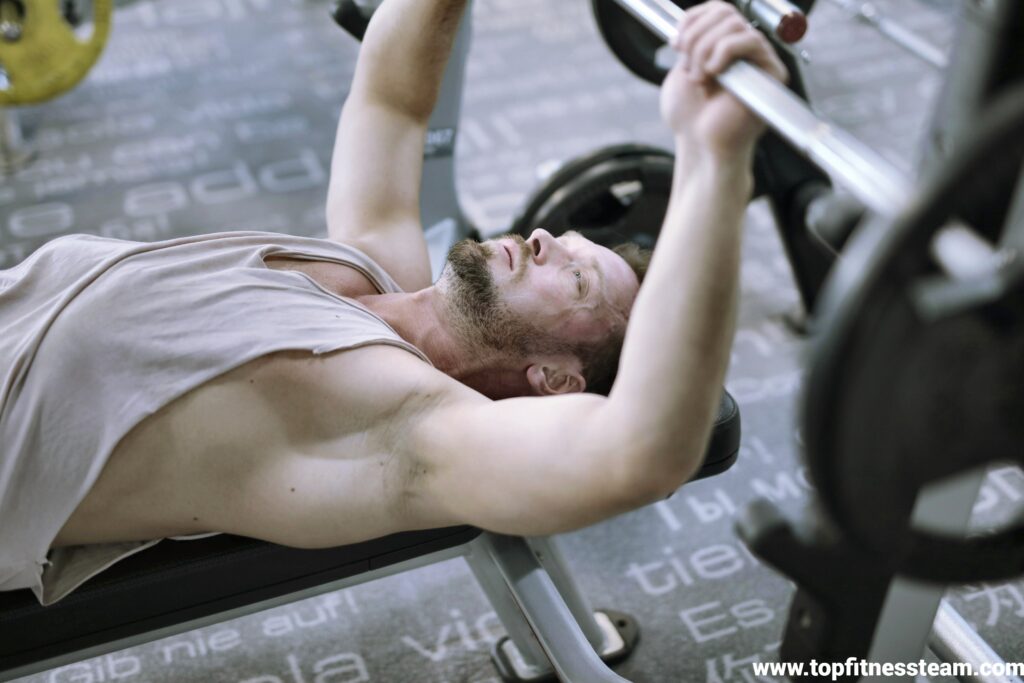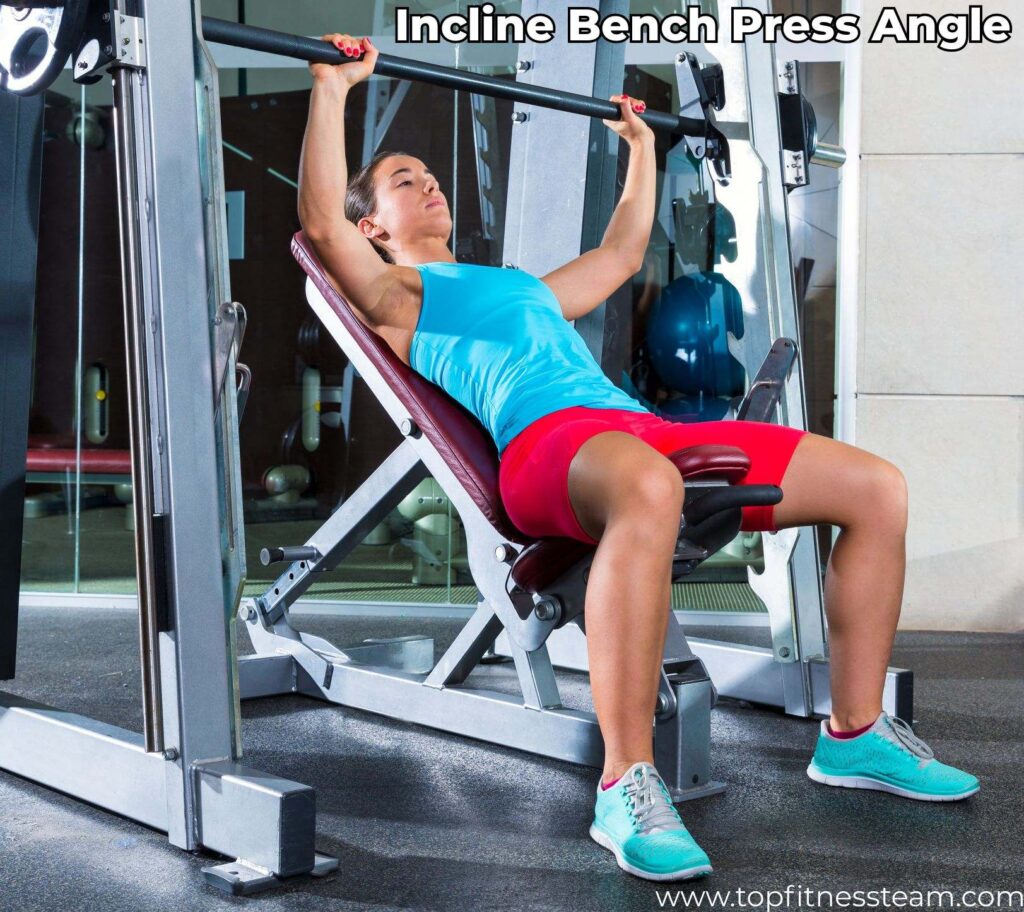
Hello everyone, Top Fitness Team is here. This article will tell you about the Incline Bench Press Angle.
Incline Bench Press
The incline bench press is a powerful variation of the traditional barbell bench press, strategically designed to target the upper portion of the pectoralis major.
Adjusting the bench to an incline moves the focus to the upper pectoral muscles, offering a more complete chest development than flat bench presses.
Anatomy of Upper Body Engagement
The primary muscles worked during the incline bench press are the upper pecs. Yet, the muscle activation does not end there. The angle of the incline dictates the involvement of surrounding muscles, including the anterior deltoids.
At a 30-degree angle, there is notable attention to the upper portion of the chest, while a 45-degree angle improves the activation of the upper chest even further.
Importance of the Incline Angle
The angle for the incline bench press is essential in deciding which muscles are drafted and how greatly amused.
While many believe a 90-degree pitch might offer the best results, akin to overhead pressing, it is crucial to note that this can shift tension to the shoulders.
A more moderate angle, such as 30 or 45 degrees, is often guided for an adequate workout.
Benefits of Incline Bench Press

Are you looking to improve your upper body workout? The incline bench press angle could be your secret weapon.
By adjusting the bench to an incline, you target the upper pectoral muscles and shoulders more intensely than a flat bench press, improving muscle growth and strength.
Plus, it adds a beneficial variety to your routine, reducing the risk of flats and keeping your workouts dynamic.
How to Perform Incline Bench Press
Are you ready to level up your chest day? An incline bench press targets the upper pectoral muscles, setting the stage for particular gains. Here’s a simple analysis of how to master the strategy:
- Adjust the bench to 30-45 degrees.
- Lie back, feet planted firmly.
- Grip barbell slightly wider than shoulders.
- Unrack the barbell with controlled motion.
- Lower the bar to the upper chest slowly.
- Push up, extending arms fully.
Perfecting the Incline Bench Press Technique & Tips
The technique is paramount in maximizing the point of incline presses. Proper form, including body alignment and bar path, is essential for targeting the right muscles and stopping injury. Good technique is required, whether at 30 degrees or a steeper 45 degrees.
How to avoid common mistake Incline Bench Press
Setting the bench at the correct angle, typically 30 to 45 degrees, to target the upper pectorals without overloading the shoulders is crucial to sidestep common mistakes during the Incline Bench Press.
Provide your grip beyond shoulder width, and keep your feet firmly on the ground. Lower the bar to the upper chest, not the neck, to maintain form and prevent strain.
Always move with control, avoiding the interest of bouncing the bar off your chest, which can lead to injury and reduce the exercise’s force.
Let’s Delve into the Video For 5 mistake
Training Variables and Their Impact
Varying the incline angle can present new challenges and pushes for the upper body, helping muscle development and stopping training plateaus.
Alternating between tips like 30 degrees and 45 degrees can provide various muscle activation patterns, which is beneficial for overall chest and upper body strength.
Complementary Exercises for the Incline Bench Press
Other exercises, such as those offered by the Incline Chest Press Machine, can provide stability and variation to your chest workouts. Also, resources like How To Incline Bench Press Correctly are valuable for those looking to perfect their strategy.
Pros And Cons
Pros
Cons
Summary
Testing with the angle of your incline bench press is the key to unlocking the full potential of your upper chest workouts. Tailoring the tip and technique to fit your personal anatomy and fitness goals makes the incline bench press versatile and practical.
My Final Thoughts
The incline bench press is your ally in seeking upper body strength and aesthetic development. Adjusting the bench to the correct angle and practicing proper form can make all the difference in your fitness journey. Research, modify, and press on the gains await.
FAQs
Q: Should the incline bench be 45 or 30 degrees?
Ans: An incline bench is most practical between 30 to 45 degrees, with 30 degrees being ideal for focusing on the upper chest while minimizing shoulder strain.
Q: Is a 40-degree incline bench good?
Ans: A 40-degree incline bench effectively targets the upper chest, offering a middle ground between the standard 30 and 45-degree angles.
Q: Does the incline bench hit the upper chest?
Ans: The incline bench explicitly targets the upper chest by shifting the muscle attention upwards compared to a flat bar.
Q: What is the best angle for an incline bench study?
Ans: Studies often cite an incline angle of 30 to 45 degrees as optimal for maximally activating the upper pectoral muscles during bench presses.
Q: Is the incline bench 35 or 45?
Ans: The incline bench can be set at 35 or 45 degrees, with personal choice and comfort dictating the best angle for individual workouts.
Thanks.